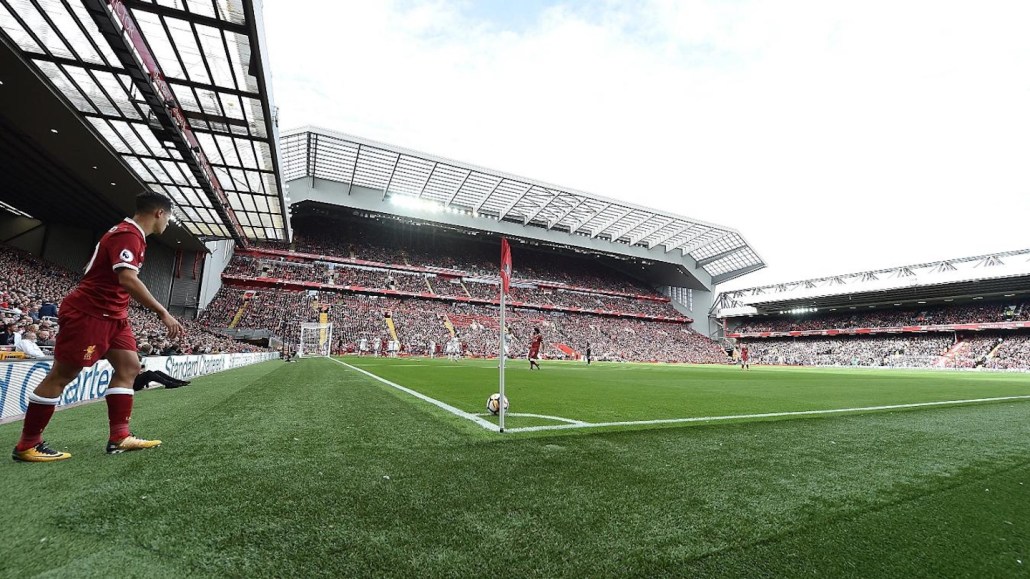
Facebook may have openly distanced itself from live streaming prime-time sports. But soccer chiefs believe it’s only a matter of time before the social network will rival broadcasters for rights, and the world’s biggest sports will be watched regularly on Facebook as well as Amazon and Google.
Facebook did, after all, attempt to get the digital rights to cricket’s Indian Premier League earlier this month. Meanwhile, Amazon is getting ready to live stream its first NFL game on Sept. 28.
Manchester United’s vice chairman Ed Woodward believes things could change as soon as February, when negotiations for the right to broadcast the Premier League between 2022 and 2025 will end. On the club’s Sept. 21 earnings call, he predicted that Facebook and Amazon would “absolutely” try to screen matches, citing interest in the Premier League, Champions League and Europa League rights.
Here’s what you need to know about the state of the live-streaming market.
Following the audience
People watching live sports on TV are getting older in the U.S., while younger fans are turning to social media to watch games, according to Magna Global.
In the U.S., NFL viewership, a barometer of the country’s appetite for live sports, is down so far this season. Audiences of NBC’s “Sunday Night Football” games in the first two weeks of the regular season declined 7 percent year over year. ESPN’s “Monday Night Football” dropped 5 percent, and the average audiences of Sunday afternoon matches on Fox and CBS are down 11 percent and 19 percent, respectively, per Nielsen. In the U.K., Premier League viewing on Sky hit a seven-year low last season, with average viewing on the broadcaster’s live channels down 14 percent year over year.
Meanwhile, young fans are tuning in via social media. More than half (55 percent) of the viewers who tuned in to 10 NFL games that Twitter live streamed last season were under the age of 25; a quarter of them were outside of the U.S.
Soccer is the most popular sport on Instagram. Instagram says one in five (21 percent) of its users are soccer fans, which amounts to 146 million of the social network’s 700 million-plus users.
So far in 2017, Facebook has struck deals to live stream 46 Mexican soccer league games, including playoffs; at least 22 Major League Soccer matches and more than 40 highlights episodes; the main events from the World Surf League; 2017 CrossFit events; and 2017-18 UEFA Champions League matches. Facebook’s coverage of these events will be free to users.
Industry sources say the NFL is the sport to watch for live streaming’s development on Facebook and Amazon. American football has been the bellwether for sports broadcasting, which is why all eyes will be on 2022 when the NFL’s current deals with CBS, Comcast, 21st Century Fox and The Walt Disney Company end.
The platform view
As global companies, Facebook, Amazon, Twitter and Snapchat want global rights to sports, but owners like the Premier League have traditionally struck market-by-market deals. Also, neither Facebook nor Amazon has worked out how to monetize the hours and hours of video content they own, so it’s hard for them to justify spending big on global rights.
The media owner view
The Premier League and NFL bosses are listening to the tech companies’ overtures as they see live viewing of their sports on TV decline.
As the head of the NFL UK Alistair Kirkwood told Digiday earlier this month: “From a commercial perspective, Amazon opens us up to a whole new type of advertiser.”
The broadcaster view
Openly, broadcasters like Sky, BT and Eurosport treat the social platforms as friends, not foes. But they are wise to the threat. Sky this year has focused on channels for specific sports, a move that should help it measure the value of those audiences when deciding what rights to renew and pursue. Meanwhile, the NFL is nurturing its own Netflix-style streaming service for all live games, some of which will also be shown on commercial broadcasters.
There’s a counterargument that suggests broadcasters are increasingly falling out of love with live sports. As a source with knowledge of BT’s plans said: “I would argue that broadband for Sky and BT is far more important than live [sports]. BT [sees sports] as just a means to an end via their broadband subscribers. Sky [has] found that those subscribers that take broadband are less likely to churn. So the primary focus of [sports] delivering value has changed into more of utility business because it’s all about churn now. You can’t really grow that business [subscriptions] any further from a Sky or BT standpoint.”
More in Media

Podcast companies turn to live events to capture growing advertiser spend
The surge in the number of live podcast events in 2025 reflects a broader shift: advertisers are betting bigger on podcasts — not just as an audio channel but as a full-fledged creator economy play.

Media Briefing: ‘Cloudflare is locking the door’: Publishers celebrate victory against AI bot crawlers
After years of miserably watching their content get ransacked for free by millions of unidentified AI bot crawlers, publishers were finally thrown a viable lifeline.

How Vogue could navigate potential industry headwinds as Anna Wintour — who agency execs say made ad dollars flow — brings on new edit lead
Anna Wintour’s successor at Vogue will have to overcome the myriad of challenges facing fashion media and the digital publishing ecosystem.





